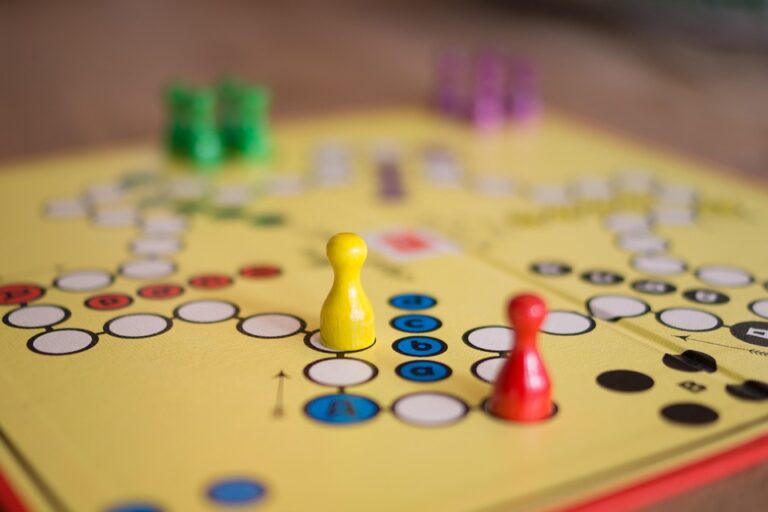The Role of Music and Sound in Enhancing Video Game Narratives
Introduction to Story-Driven Games
In recent years, the landscape of video gaming has evolved dramatically, with a notable shift towards story-driven games that invite players into immersive worlds ruled by captivating narratives. One of the key elements that brings these stories to life is the effective use of music and sound. This article explores how these auditory components enrich video game narratives, making them more engaging and impactful for players.
Why Music and Sound Matter in Story-Driven Games
Creating Atmosphere and Mood
Sound is more than just an auditory background in story-driven games; it shapes the very atmosphere a player experiences. According to a 2023 report from the Entertainment Software Association, an astounding 60% of gamers state that sound quality significantly affects their gaming experience. It’s the mood set by music, from the haunting melodies of a forgotten ruin to the exhilarating tunes accompanying a fierce battle, that can evoke emotions and set the stage for an unforgettable adventure.
Enhancing Emotional Engagement
Music and sound amplify the emotional weight of story-driven games. For example, consider the heart-wrenching piano melody in "Final Fantasy VII." The game’s score elevates pivotal moments, transforming standard narrative choices into profound emotional experiences. When players hear a soft, melancholic tune during a character’s demise, it resonates deeply, leaving the story etched in their memories long after the game is over.
The Power of Sound Effects
In addition to music, sound effects play a crucial role in story-driven games. The sounds of a creaking door, distant thunder, or the whisper of wind contribute to world-building, making settings feel alive and dynamic. A study from GameAnalytics found that players prefer story-driven games that utilize intricate soundscapes. Engaging sound effects can increase player immersion by 30%, proving that audio elements are just as vital as visuals in creating a richly layered narrative.
Key Functions of Audio in Story-Driven Games
World-Building
Sound contributes to the overall immersion of a game, helping to shape its universe. In "The Legend of Zelda: Breath of the Wild," ambient sounds like rustling leaves, animal calls, and flowing water create a vivid environmental backdrop. These audio cues not only instill a sense of place but also make players feel as if they are genuinely inhabiting the game world.
Narrative Cues
Music and sound also serve as narrative tools, guiding players through the story. For instance, subtle changes in background score can clue players into upcoming events or shifts in tone. In "The Last of Us," rising tension in the score correlates with impending danger, alerting players even before they encounter threats. This method illustrates how auditory cues can enhance storytelling, ensuring players are attuned to the narrative flow.
Character Development
Voice acting and character-specific themes enrich the personalities of characters in story-driven games. Each character’s signature musical motif can evoke their personality traits or emotional arcs. For instance, in "Persona 5," the protagonist’s fighting style and background are mirrored in their unique soundtrack, offering players a deeper understanding of who they are.
Examples of Iconic Audio-Driven Narratives
"Journey"
The indie game "Journey," developed by Thatgamecompany, serves as an exemplary case study in the power of sound in storytelling. The game’s dynamic score evolves based on player actions, ensuring that each player’s journey is unique. The music’s union with the visual storytelling amplifies emotional moments, demonstrating how audio can function as both a narrative foundation and a character in its own right.
"God of War (2018)"
Another prime example is "God of War," which integrates a symphonic score that not only underscores emotional scenes but also adapts to gameplay. The music shifts between serene and intense, following the emotional landscape as players guide Kratos and Atreus through a world defined by mythology and father-son dynamics. This layered approach to sound exemplifies how vital music is in conveying story arcs and fostering engagement.
Conclusion: The Evolution of Story-Driven Games Through Sound
As the gaming industry continues to advance, the integration of music and sound in story-driven games will undoubtedly play an increasingly significant role. With advancements in technology, including spatial audio and enhanced sound design, the potential for deeper engagement is boundless. As seen in iconic examples like "Journey" and "God of War," sound has the power to elevate gaming narratives, making them not just interactive experiences, but also memorable stories that resonate with players.
For more insights into the world of gaming narratives, consider exploring the following articles on Buzzo.live: The Impact of Visual Design on Storytelling and Character Development in Video Games. Additionally, for a deeper understanding of the relationship between sound design and player immersion, check out this informative resource from Gamasutra.
Suggested Images
- Image of a sound engineer working on game music (Alt text: "Sound design in story-driven games enhances the narrative experience.")
- Image of a game character engaging in an emotional moment (Alt text: "Music elevates emotional storytelling in narrative games.")
In conclusion, the role of music and sound in story-driven games is irrefutable; it enhances not only the atmosphere but the very narrative thread that binds these interactive experiences. Embracing the might of audio can transform ordinary gameplay into an extraordinary journey.


